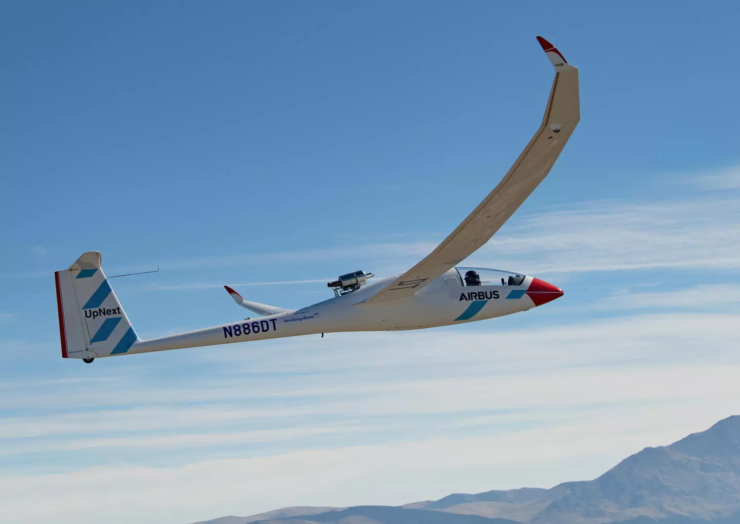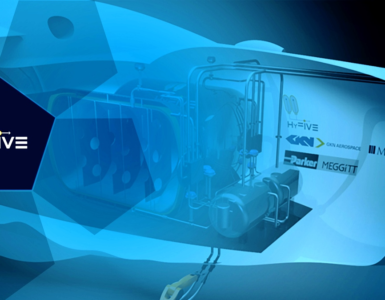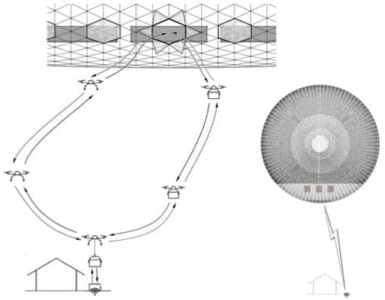Contrail-chasing Blue Condor makes Airbus first full hydrogen-powered flight.
The modified glider at the centre of Airbus UpNext’s hydrogen contrail-studying experiment, Blue Condor, made its first hydrogen-powered flight over Nevada in the United States on 8 November. The flight was the company’s first ever to use hydrogen as the sole fuel source, and it kicked off a test campaign that will conclude in a contrail-measuring mission in early 2024.
Hydrogen offers aviation a path to low-carbon operations, yet its combustion produces contrails just like conventional jet fuel. Hydrogen contrails, however, differ significantly. They don’t contain soot or sulphur oxides, but do hold nitrous oxides and a lot of water vapour: up to 2.5 times more than kerosene contrails. Both are considered climate-impacting emissions, and as such the aviation industry has a duty to address them.
Therefore, as part of the ZEROe project, Airbus is committed to studying the composition of these little-understood hydrogen contrails. Using a modified Arcus-J glider, Airbus UpNext’s Blue Condor project will take a small hydrogen-combustion engine as high as 30,000 feet and compare its emissions to a similar-sized kerosene engine, flying alongside onboard a second aircraft. Both gliders are operated by The Perlan Project and the hydrogen engine was assembled by German company Aero Design Works.
🔥 What about we co-host a webinar? Let's educate, captivate, and convert the hydrogen economy!
Hydrogen Central is the global go-to online magazine for the hydrogen economy, we can help you host impactful webinars that become a global reference on your topic and are an evergreen source of leads. Click here to request more details
Blue Condor has now entered its flight test phase. The 8 November flight lasted around 30 minutes and its aim was to increase the hydrogen engine’s thrust at 7,000 feet, while stabilising the aircraft at different speeds. Two further flights have taken place since, performing tests including an engine start at 10,000 feet.
The Blue Condor team plans to operate a first contrail-studying operation during Nevada’s cold-weather window early next year. Then, the Arcus-J will be towed to test altitude by a Grob Egrett aircraft instrumented by the German aerospace lab DLR. This ‘chase’ aircraft will then follow behind, using sensors to collect and analyse contrail and atmospheric data. The flight promises to be a big step in furthering understanding of hydrogen’s climate impact, and ultimately in reaching Airbus’ ZEROe target entry into service in 2035.
READ the latest news shaping the hydrogen market at Hydrogen Central
Contrail-chasing Blue Condor makes Airbus first full hydrogen-powered flight. source








